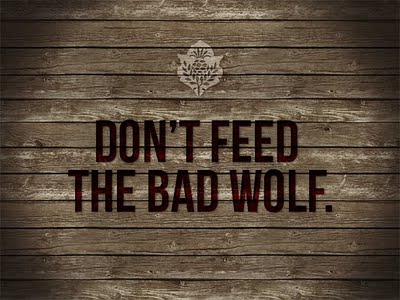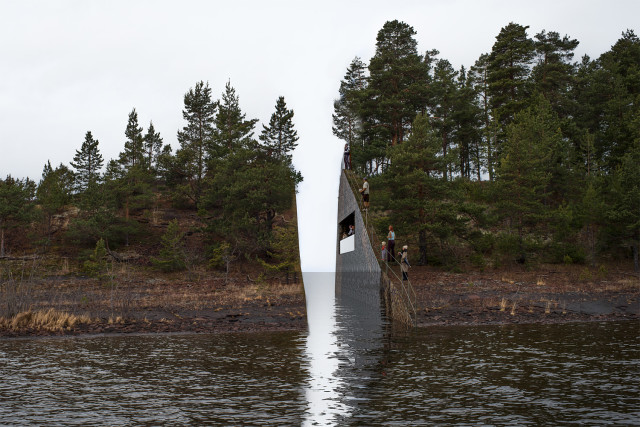It’s been almost three years since a gunman detonated a bomb in Oslo and then stormed a small summer camp off the coast of Norway, killing 77 people and cementing a record as the worst mass shooting in modern memory. This month, the country revealed plans for a memorial to the tragedy…. Designed by a Swedish artist named Jonas Dahlberg, the plan is more land art than architecture. On the island of Utøya, where the gunman gained access to a summer camp by dressing in a police uniform and showing a fake ID on July 22, 2011, Dahlberg proposes creating a massive gap of water and air. By slicing a huge section of the island’s landmass away, he would create a steep fjord through the site where the shooting occurred—a void that he describes as “a wound or a cut within nature itself.”
 One of the most difficult aspects of any horrific tragedy- 9.11, Beslan, Columbine, Sandy Hook, and on and on and on- is how to manage collective memory. We all recognize that life must go on; that’s what we do in the wake of tragedy- we find a way to pick up the pieces and move forward. The other option is to wallow in grief and anger, which does no one any good. At some point we have to find a way to navigate our way to the other side.
One of the most difficult aspects of any horrific tragedy- 9.11, Beslan, Columbine, Sandy Hook, and on and on and on- is how to manage collective memory. We all recognize that life must go on; that’s what we do in the wake of tragedy- we find a way to pick up the pieces and move forward. The other option is to wallow in grief and anger, which does no one any good. At some point we have to find a way to navigate our way to the other side.
What should we do with the collective memory of the tragic, horrific, and/or previously unthinkable? Trying to forget isn’t an option, not considering the scope of damage done and lives lost. How then to put such a painful memory into perspective, into a place where we might remember without being paralyzed with grief and sorrow? It’s a tough thing to do, and it’s one of those things that confirms the utility and healing power of art. This can be particularly true in a place generally unfamiliar with our most modern of tragedies- mass shootings.
Utøya Island was a horrific tragedy by any standard, but Norway, one of the most peaceful nations on the planet, is unused to such horrific and pointless violence. The attacks of July 22, 2011- a bombing at a government office in downtown Oslo and a shooting spree on Utøya Island- claimed a total of 77 lives. Many of the dead were children. The attacks, which the country was completely unprepared for, shook Norwegians to the core. How then to memorialize the horrible events of that day, and to remember those whose lives were lost to senseless violence?
The monster responsible for the massacre, Anders Behring Breivik, a 32-year-old Norwegian right-wing extremist, methodically killed unarmed, defenseless adults and children before surrendering to police. He most likely will spend the rest of his life in a Norwegian prison, but Norwegians themselves are left with the task of moving on without forgetting. The way they hope to accomplish that is a truly unique and admirable work of art, one that will leave no doubt as to its purpose.
After a public competition to select an appropriate memorial design, Swedish artist Jonas Dahlberg was chosen to design it. His concept is…well, not your usual statue or commemorative plaque. It’s as ambitious as it is unique and representative of the tragedy that shook Norway to its core.
My concept for the Memorial Sørbråten proposes a wound or a cut within nature itself. It reproduces the physical experience of taking away, reflecting the abrupt and permanent loss of those who died. The cut will be a three-and-a-half-meters-wide excavation. It slices from the top of the headland at the Sørbråten site, to below the water line and extends to each side. This void in the landscape makes it impossible to reach the end of the headland.
Visitors begin their experience guided along a wooden pathway through the forest. This creates a five to ten minute contemplative journey leading to the cut. Then the pathway will flow briefly into a tunnel. This tunnel leads visitors inside of the landscape and to the dramatic edge of the cut itself. Visitors will be on one side of a channel of water created by the cut. Across this channel, on the flat vertical stone surface of the other side, the names of those who died will be visibly inscribed in the stone. The names will be close enough to see and read clearly — yet ultimately out of reach. The cut is an acknowledgement of what is forever irreplaceable.”
Being neither Norwegian nor having lost loved ones to the sort of senseless violence Breivik visited upon downtown Oslo and Utøya Island, I’m in no position to address the appropriateness (or lack of same) of Dahlberg’s project. It does seem to me that his concept is a perfect example of the healing power of art. We may not always understand art or those who create it, but there times when art speaks to us in a way nothing else can. This is one of those times.
Public memorials are a difficult proposition. Too bombastic or saccharine, and you run the risk of alienating visitors. Too diminutive or abstract, and you run the risk of failing to provide a space to mourn and remember. Dahlberg’s design is the perfect balance: It will literally transform the landscape of the island forever—but by putting visitors out in nature, it will also give people the freedom to take what they will from the experience.
I don’t know if Dahlberg’s brainchild will help Norwegians heal or find closure, but it will certainly serve as a visible, impossible to ignore reminder of that terrible day. The memory of the 77 souls lost on July 22, 2001, will be kept alive. In the end, I suppose that’s what matters.

